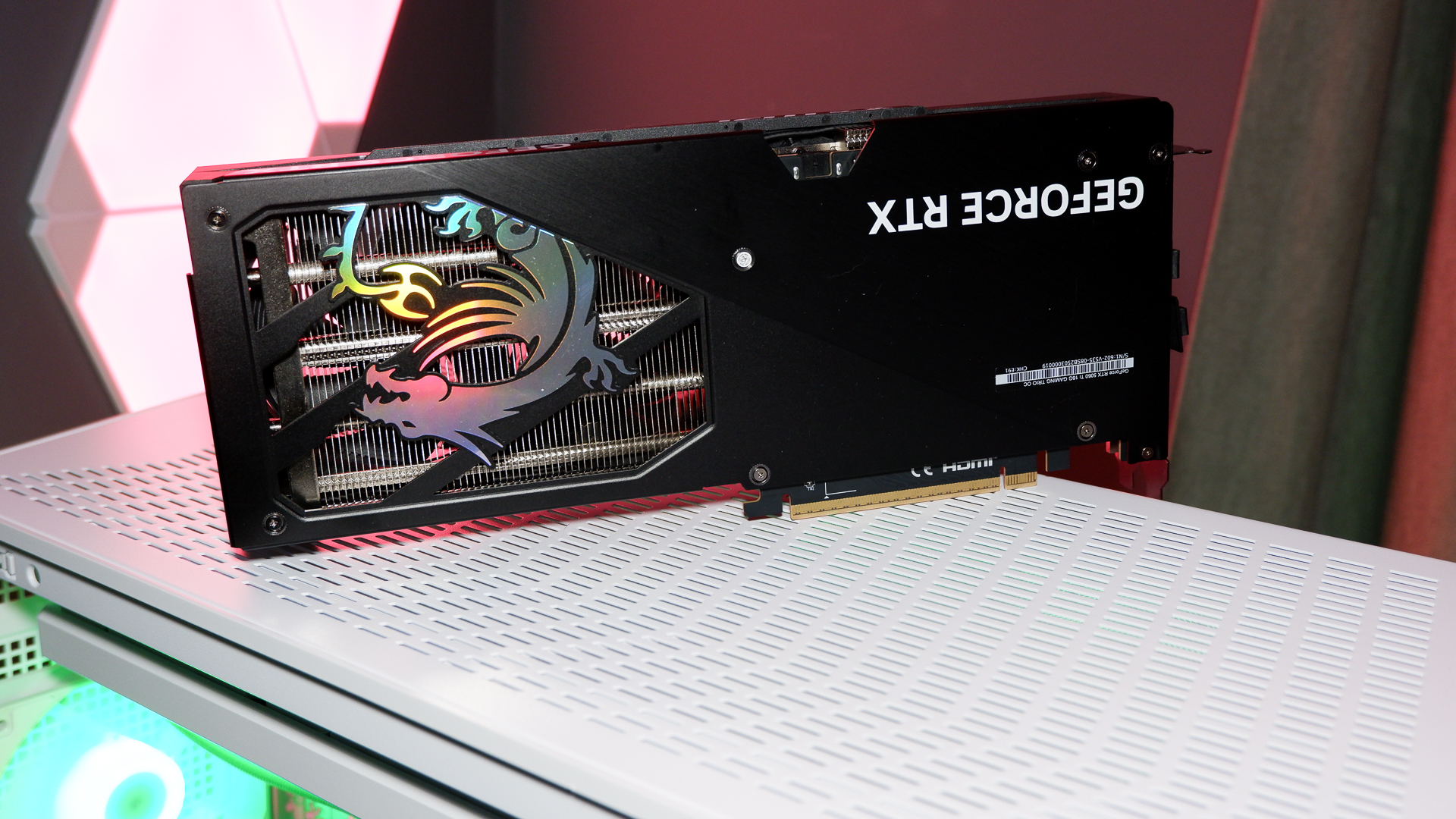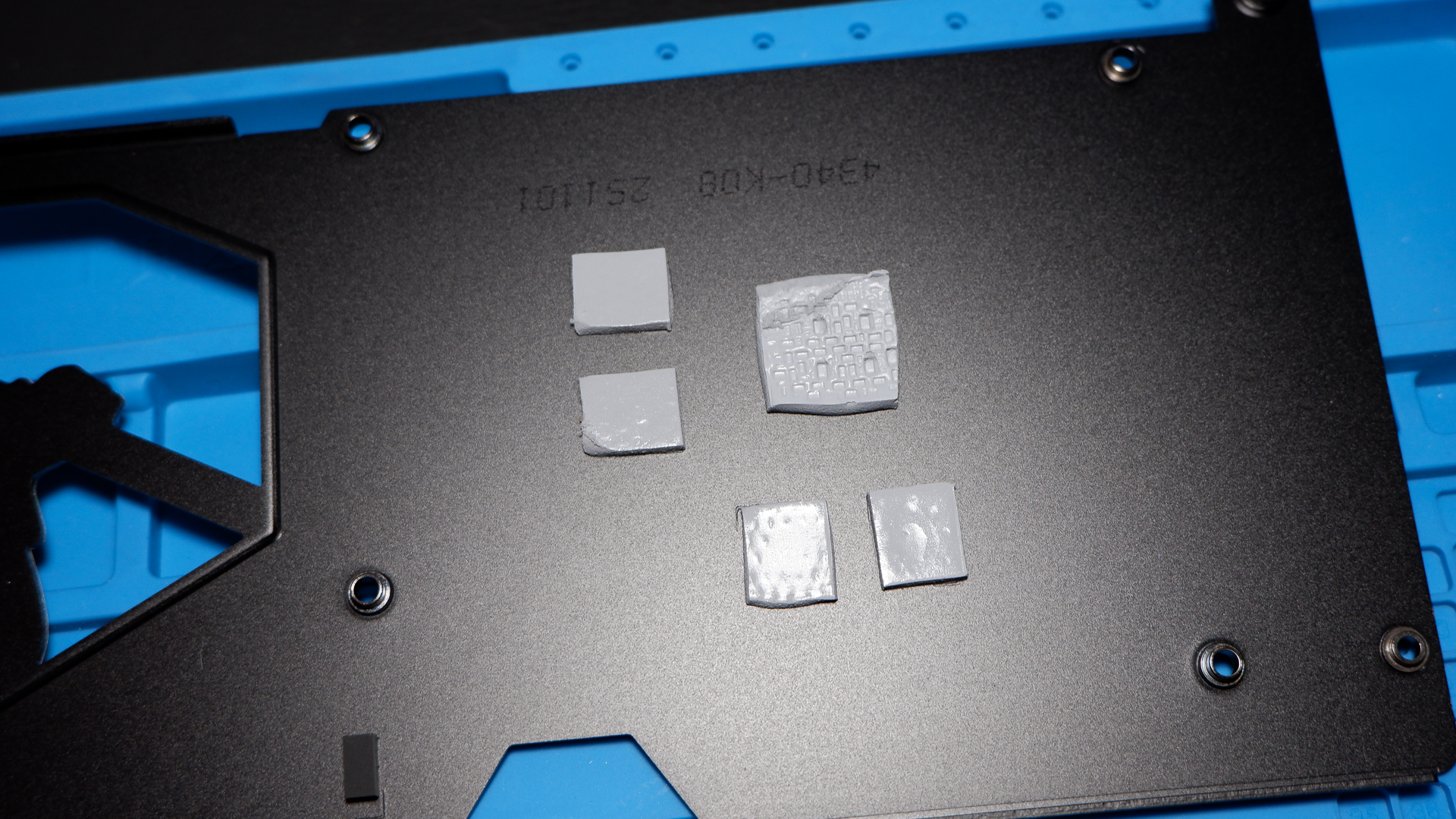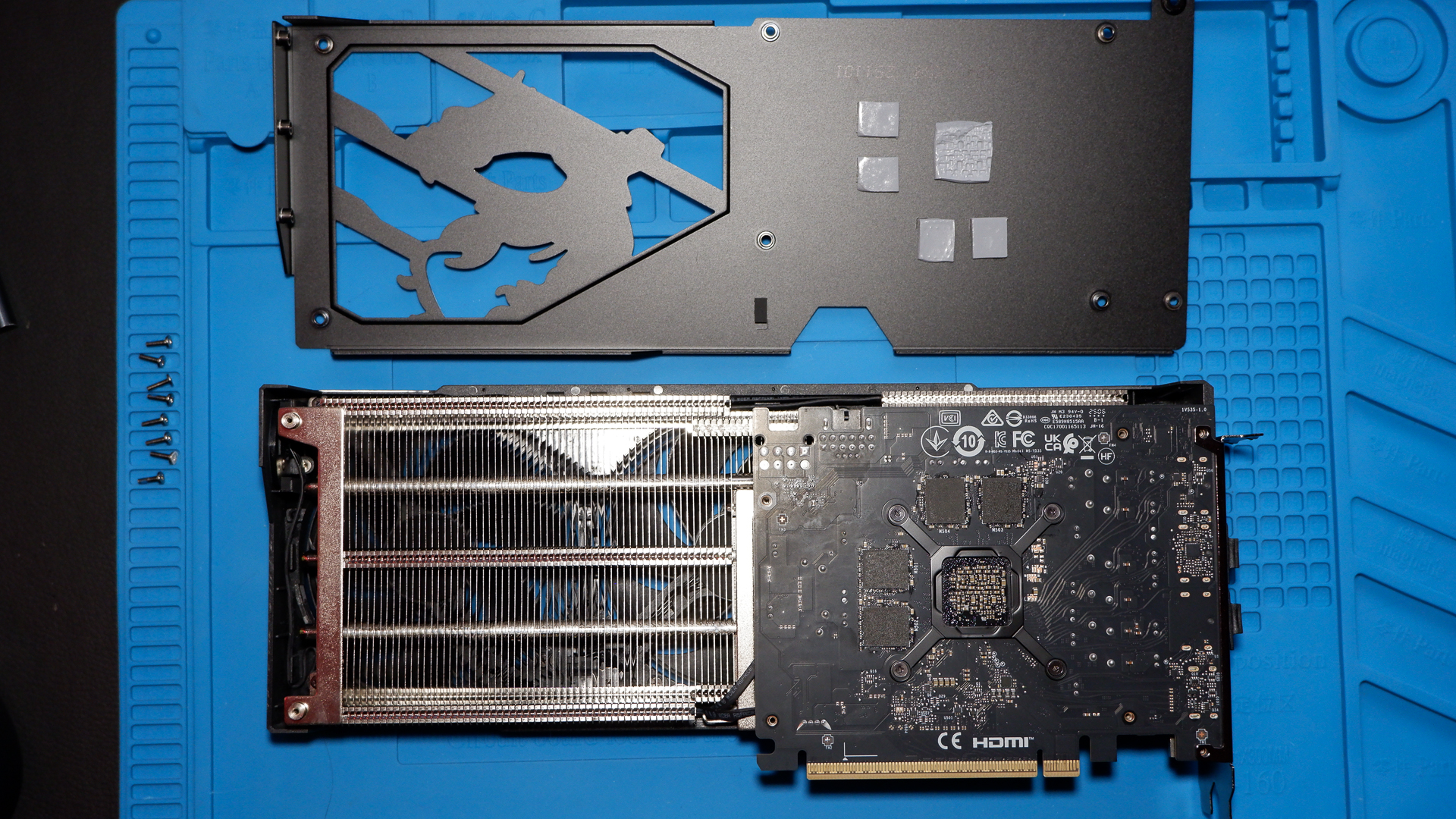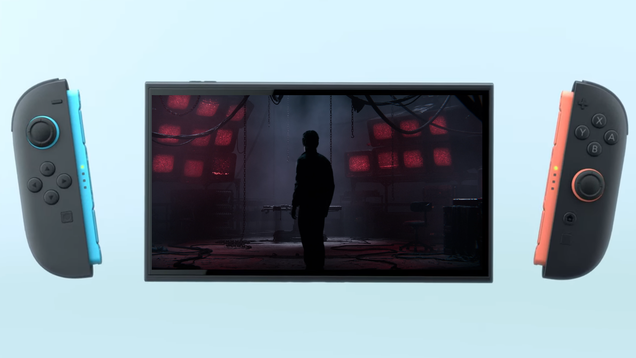
The best of the lot but its price tag might be insurmountable.
There’s no Founders Edition for the RTX 5060 Ti. That means it’s up to you to decide on a third-party design. We’ve tested three 16 GB models for the card’s launch, including two aiming for the MSRP of $429, but this review covers the only one brave enough or stupid enough to disregard that price tag completely. Easily the highest quality of the lot, it’s the MSI RTX 5060 Ti 16G Gaming Trio OC.
Some care and attention have been paid to the design of this triple-fan graphics card. That’s clear to me as soon as I remove it from its crinkly packaging and spot the dragon motif cut away from its metal backplate. That’s not the sort of flare you’ll find on either MSRP card from PNY or Palit, with the latter actually lacking a metal backplate altogether.
Metal, plastic, who cares? For this graphics card, it actually does matter. The backplate has a few benefits on the Gaming Trio beyond looking good. First off, it offers some structural rigidity to help prevent any sag on the card, but more importantly it offers a way to help cool the four GDDR7 memory chips loaded onto the rear of the PCB.
You only get 16 GB of VRAM on the RTX 5060 Ti by doubling the four RAM chips used on the 8 GB model. That’s some simple maths I can get down with. In practical terms, however, that means using what’s called ‘clamshell’ mode to stick another four 16 Gb (2 GB) chips on the opposite side of the PCB to the GPU. These memory chips are not covered by the GPU’s heatsink and will run hotter without some other cooling solution in place.
On the Gaming Trio, some thermal pads are applied between them and the backplate, which then acts as a surrogate heatsink. Aww. Though you can get away with none, as proven by the Palit RTX 5060 Ti 16 GB Infinity 3 with a plastic backplate, no pads, and a maximum average temperature across all chips during a never-ending loop of 3DMark Steel Nomad only marginally higher than this Gaming Trio (68°C to 62°C).
Still, data be damned, I don’t like the idea of leaving these memory chips without any cooling over years of use. So, that’s one benefit to the MSI Gaming Trio. Another are its dashing good looks.
This is by far the best-looking of the three cards I’ve tested. Admittedly, that’s only three cards, but the other two I’m not a fan of, and they’re the affordable ones. I’m a sucker for translucent plastic on just about anything—I was a see-thru Game Boy Advance kid—and there’s some of that effect to the shroud on this card. It has RGB lighting zones on either side of the central fan and around the MSI badge on the tip of the card, which is easy to see through the glass-fronted MSI Pano 100R PZ case it’s currently mounted in.
Good-looking, runs cool, well-built… this card has a lot going for it. But then we do have to talk about the price at some point.
In my Palit RTX 5060 Ti 16 GB Infinity 3 review, you’ll find this sentence: “You should walk away immediately at anything above $550. That’s RTX 5070 money.” Now, want to take a guess as to the price of the Gaming Trio?
It’s $550.
That’s 28% more than the reference MSRP for this card. It’s not that unusual for a third-party graphics card to charge the same price as the ‘next tier up’—ie an RTX 5060 Ti for the price of an RTX 5070—but it’s never an easy pill to swallow. A sign of the times to be charged over $500 for the bottom-rung GPU of the entire RTX 50-series, too.
This card is overclocked out of the factory to the tune of 2647 MHz, which is 75 MHz above the reference clock. That’s not a large overclock for this card, a mere 3%, and we’ll push it further in just a moment, but here’s how it fares out of the box.
The RTX 5060 Ti is able to deliver a healthy performance bump over the RTX 4060 Ti 8 GB. In my tests, the Gaming Trio is 20% ahead at 1080p, 23% ahead at 1440p, and 41% ahead at 4K. I should qualify that we’re talking pretty slim 4K frame rates most of the time, often sub-30 fps, and you’ll need to tap DLSS 4 and Multi Frame Generation to access more playable frame rates—you can, of course, as this card supports all that.
PC Gamer test rig
CPU: AMD Ryzen 7 9800X3D | Motherboard: Gigabyte X870E Aorus Master | RAM: G.Skill 32 GB DDR5-6000 CAS 30 | Cooler: Corsair H170i Elite Capellix | SSD: 2 TB Crucial T700 | PSU: Seasonic Prime TX 1600W | Case: DimasTech Mini V2
Compared to the reference clocked Palit RTX 5060 Ti Infinity 3—the one with a plastic backplate—the extra money doesn’t get you any more frames at 1080p or 1440p. They equal out for gains/losses across our benchmarking suite.
The Gaming Trio does run cooler than its counterparts—it’s a couple of degrees lower than the Palit at stock clocks and way better than the PNY Dual Fan OC. The Gaming Trio is, as the name suggests, a triple-fan unit, but it’s also a little larger than the Palit at 300 x 125 x 44 mm. That is MSI’s measurement, inclusive of the PCIe slot. It’s about 110 mm wide just the shroud itself. The other measurements seem bang-on.
The Gaming Trio also maintains its cool composure when overclocked, which is the one place where it really shines.
Many of the RTX 50-series cards I’ve tested have kept power limits under lock and key. Not the Gaming Trio. You’re free to tinker with the power limit, voltage, and, of course, clock speeds to your liking. I managed to push this card with a 410 MHz offset, which is pretty high considering the factory OC of 75 MHz already applied, and altogether pushes the card in excess of 3100 MHz while gaming.
I also pushed the memory a little but ran into some instability, which forced me to dial back a touch. I’m sure with a little more time, someone could cook up a mean overclock on this card and drop back the power demands, which would be the ideal scenario for long-term use.
This untuned overclock netted me a 10% increase in average frame rates at 1080p. 10%. That’s excellent, and exactly what I’m after on an expensive third-party card such as this. At 1440p, that shrinks a little to just under 9%. I also managed to push the core clock on the Palit Infinity 3 with a 400 MHz offset, which handed me almost as much of a leap, but it is still slower than the MSI. The Gaming Trio leads it by 2.4% at 1080p and 1.5% at 1440p.
✅ You want to overclock the RTX 5060 Ti: Even with a fairly lazy overclock, you can pull 10% higher frame rates from this graphics card. That’s immense.
❌ You could throw more money at your GPU: You can find an RTX 5070 for near to the price of this RTX 5060 Ti. Albeit likely not as high-quality cards, but I’d rather the bigger GPU in the long-run.
You don’t often see these sorts of gains in either clock speed or resulting frame rates on modern processors. Take ’em while you can. The big companies don’t like to leave performance on the table like they used to, which has made us wonder why Nvidia’s left so much headroom on the RTX 50-series. Their loss, our gain.
Even with a lick more megahertz, the RTX 5060 Ti is still nowhere close to the RTX 5070 in terms of raw performance. That’s an awkward admission to make with the MSI stalking the better card’s price tag.
But would you get an RTX 5070, especially one in a card of this quality, for anything close to $550? That’s a good question. Right now, as of April 17, 2025, you can buy an Asus Prime RTX 5070 for $600. That should be an MSRP card, and it’s unlikely to have all the bells and whistles on this MSI, but it houses a much larger chip and makes better use of its 12 GB of memory for it. In the UK, you can buy an RTX 5070 for £500—or £30 less than MSRP—which is the same price as MSI will ask for this card in dear ol’ Albion. That’s a very basic model, not that dissimilar to the Palit I’ve reviewed, but it’s darn affordable.
By far my favourite RTX 5060 Ti of the lot so far, the MSI has been built to a much higher standard than its cheaper counterparts. That does count for something, but not quite the $121 premium it’s asking over the MSRP models. If you can splurge on this MSI, you can probably also save another $50 for an RTX 5070, or just wait for that card to drop to $550. It will happen, eventually, and I’d much rather the RTX 5070 for the same money in the long-run.










